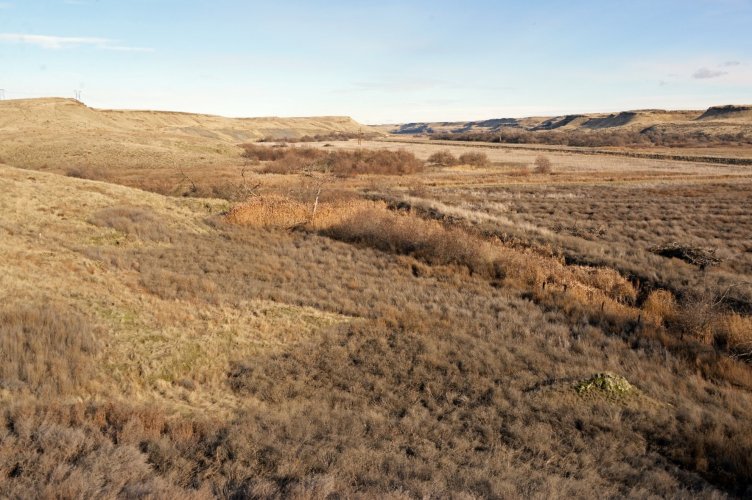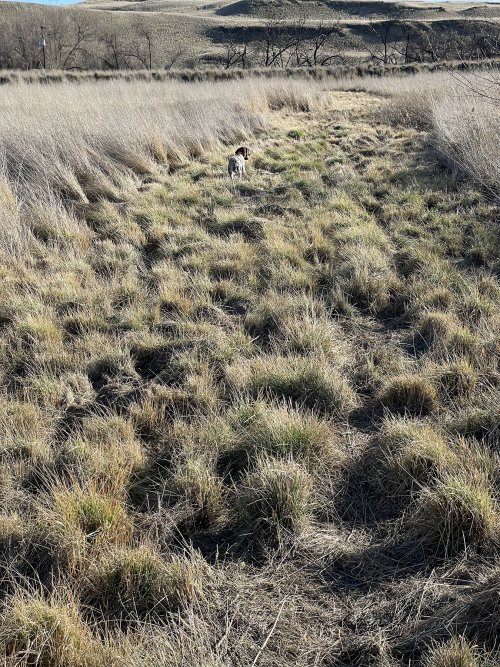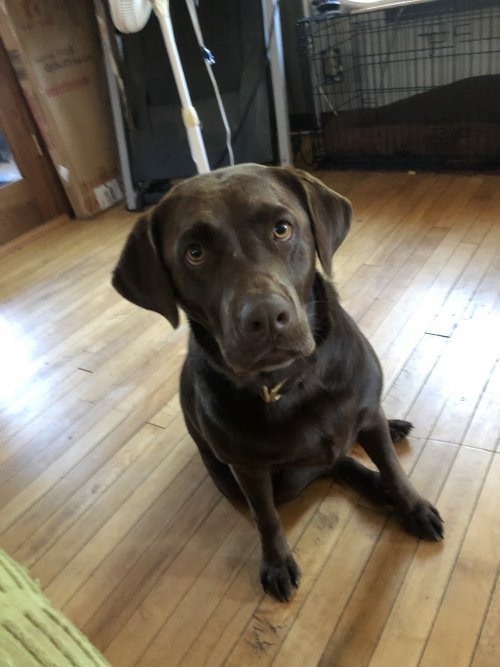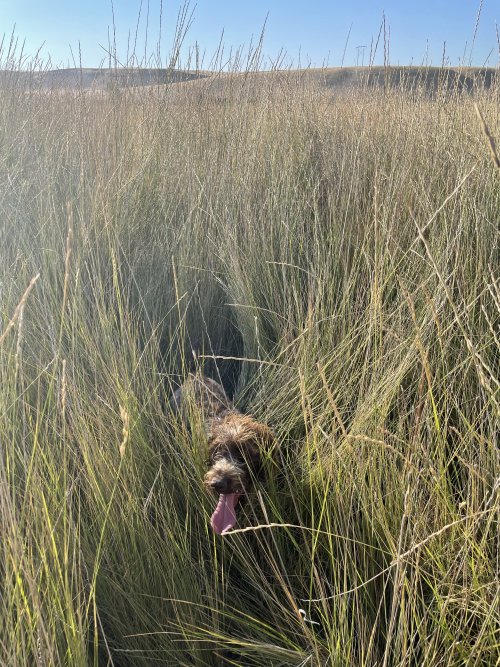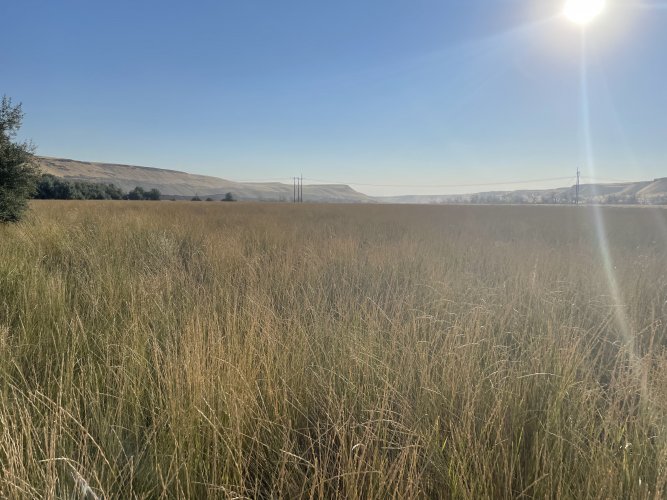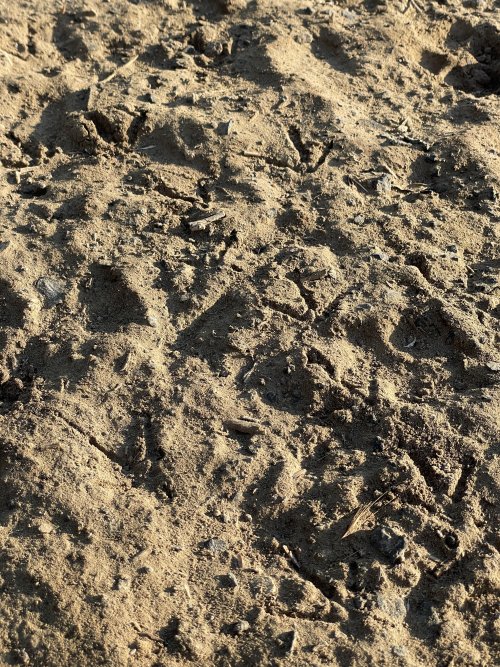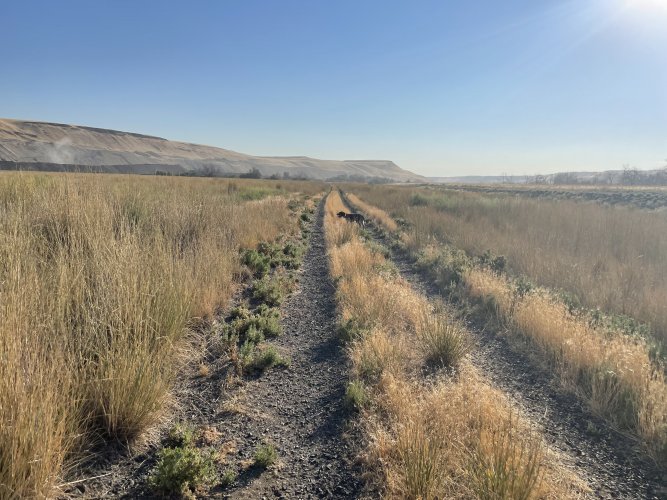fleabagmatt
Well-known member
My question is more general, but I've been thinking about this particular spot that I scouted last spring, and so using it as an example.
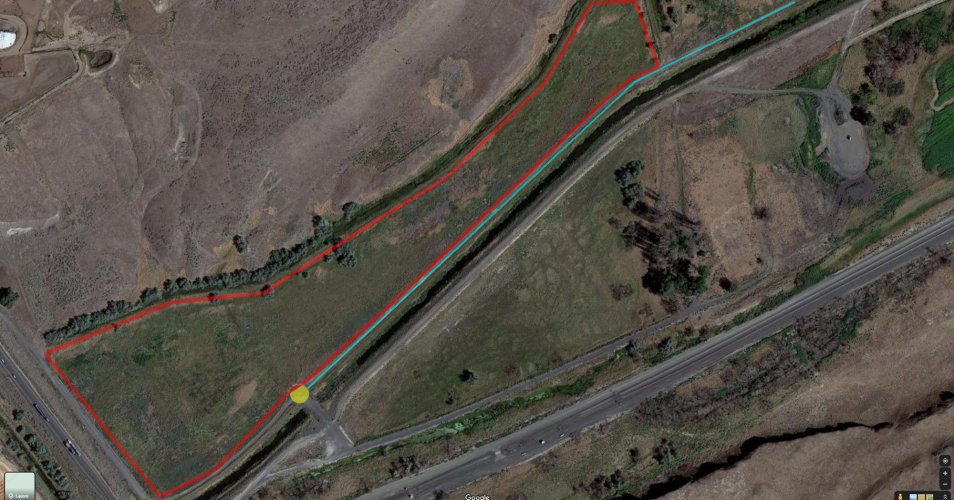
In this image, the yellow dot is the parking spot. The gravel road continues along the blue line, but is closed to vehicles. On one side of the road is a creek, on the left is an open field of thick grass, between waist and chest height. It's a slog to move through for both me and my dog. I haven't actually walked through that stuff yet, I've followed the road out and headed up a draw that is outside the photo. I am wondering how to hunt the thick grass. There are pheasants forever habitat signs here, so I assume pheasants are present. I've found coveys of quail in and around the russian olives in the draw mentioned above.
I don't really know what I am doing when looking for birds, but I've been approaching it like I would bass fishing. Walking the edges of cover and looking for things that stand out from the rest of the area. So in this case I would walk the edges of the thick grass, along the road as well as near the ditch/russian olives at the top of the red area. If there is a tree or bushes out in the middle of the grassy area I will go pass by that, otherwise I haven't been spending time out in the middle of it. How does one handle a big field of homogenous cover, like the wide open, thick grass in the red area? Another example would be a cut wheat field. Should I be covering the whole field, or primarily sticking to the field edges where the cover changes?
I'm gettin' excited already for upland season, can't wait to see what little Ruby can do out there.

In this image, the yellow dot is the parking spot. The gravel road continues along the blue line, but is closed to vehicles. On one side of the road is a creek, on the left is an open field of thick grass, between waist and chest height. It's a slog to move through for both me and my dog. I haven't actually walked through that stuff yet, I've followed the road out and headed up a draw that is outside the photo. I am wondering how to hunt the thick grass. There are pheasants forever habitat signs here, so I assume pheasants are present. I've found coveys of quail in and around the russian olives in the draw mentioned above.
I don't really know what I am doing when looking for birds, but I've been approaching it like I would bass fishing. Walking the edges of cover and looking for things that stand out from the rest of the area. So in this case I would walk the edges of the thick grass, along the road as well as near the ditch/russian olives at the top of the red area. If there is a tree or bushes out in the middle of the grassy area I will go pass by that, otherwise I haven't been spending time out in the middle of it. How does one handle a big field of homogenous cover, like the wide open, thick grass in the red area? Another example would be a cut wheat field. Should I be covering the whole field, or primarily sticking to the field edges where the cover changes?
I'm gettin' excited already for upland season, can't wait to see what little Ruby can do out there.




